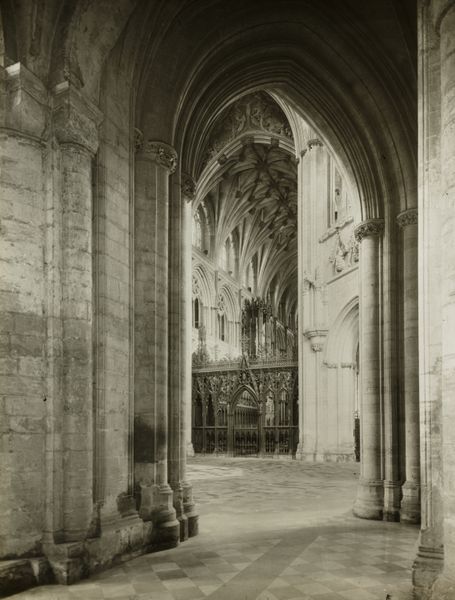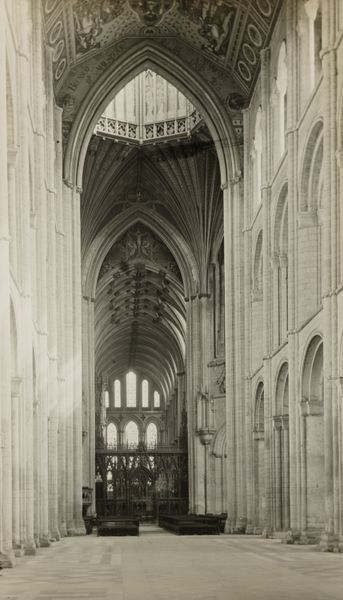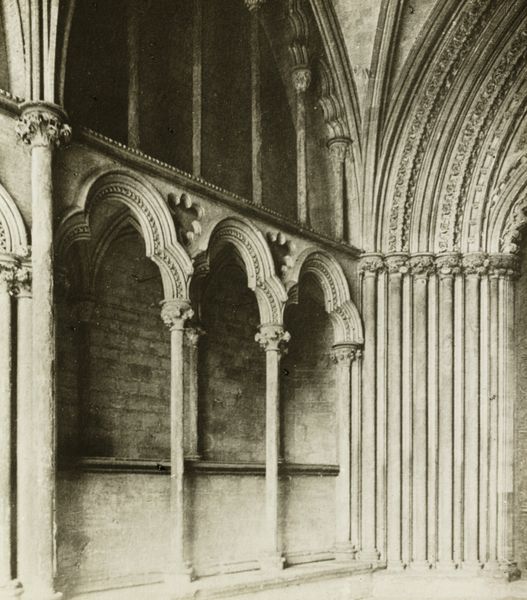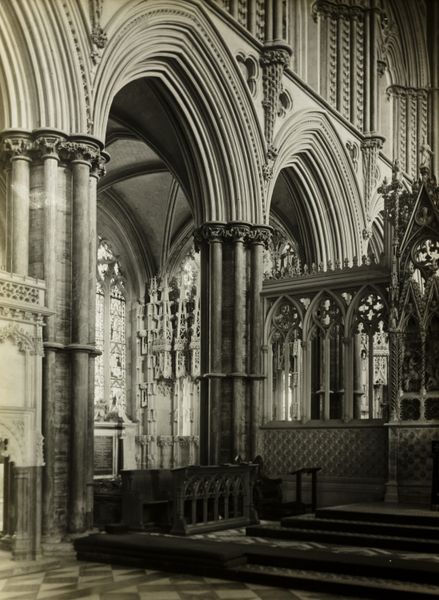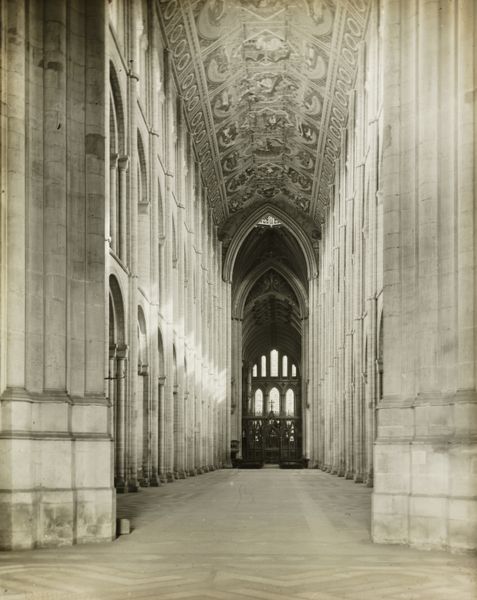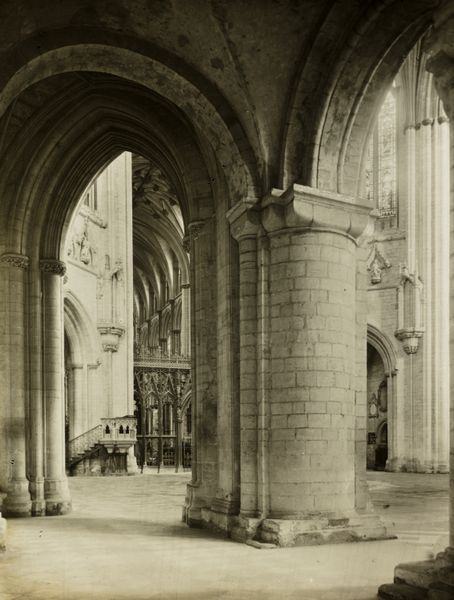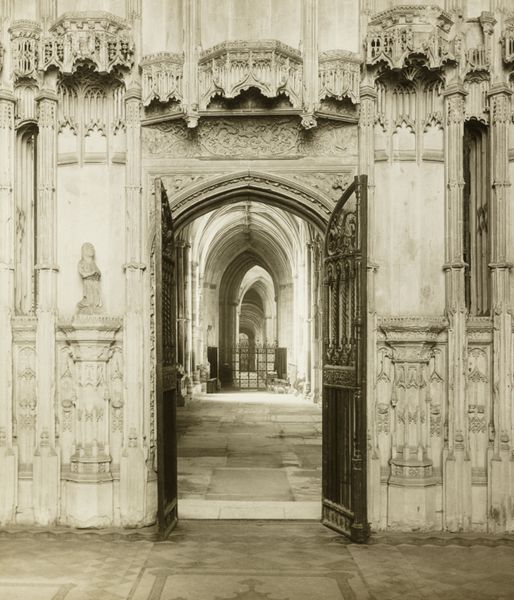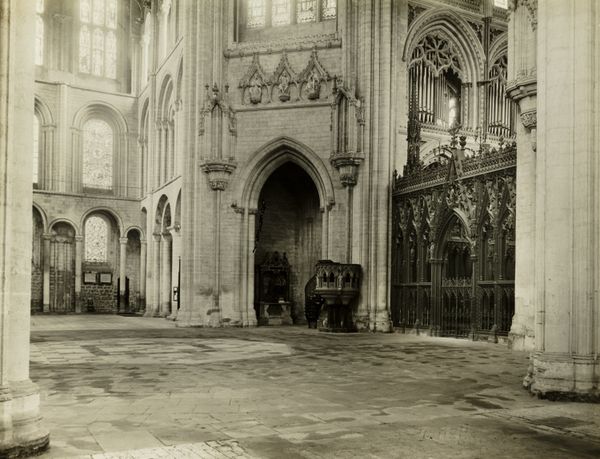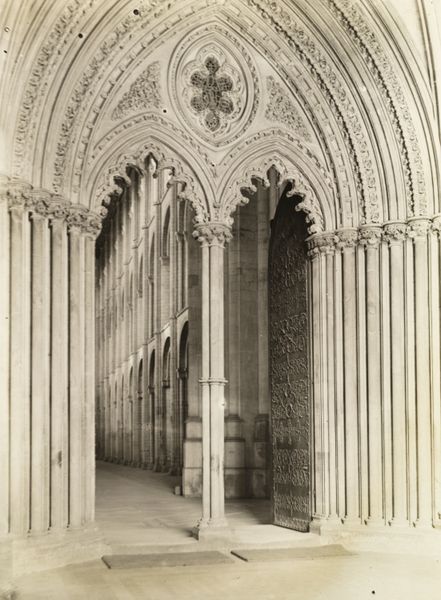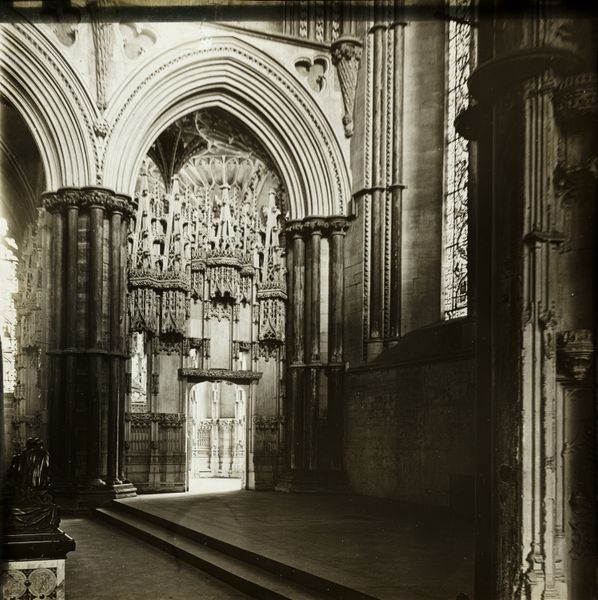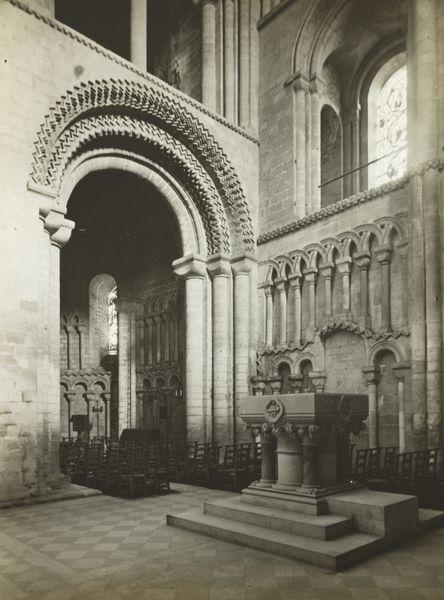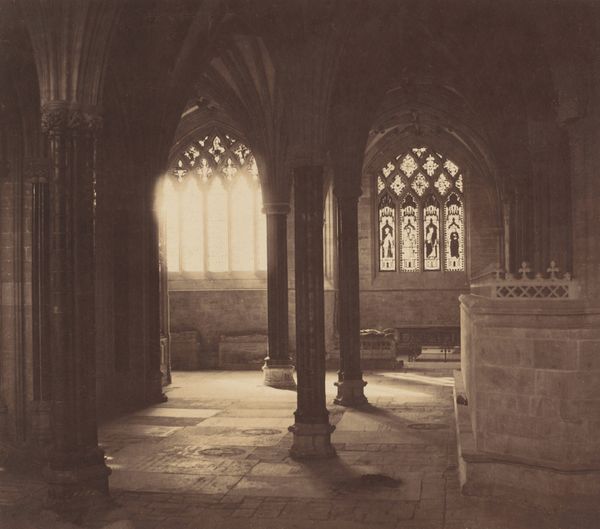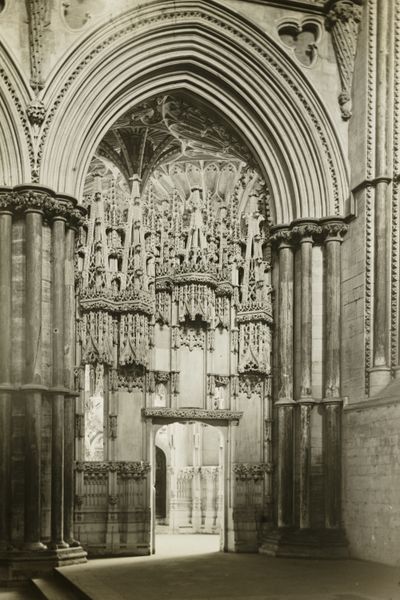
photography, glass, architecture
#
16_19th-century
#
medieval
#
pictorialism
#
sculpture
#
landscape
#
historic architecture
#
photography
#
glass
#
geometric
#
line
#
architecture
Dimensions: 8.2 × 8.2 cm
Copyright: Public Domain
Editor: So, here we have Frederick Evans' photograph, "Ely Cathedral: North Choir Aisle to West," taken in 1891. The depth and detail achieved through photography really emphasize the scale of this architecture. It's breathtaking, almost dizzying. What do you make of it? Curator: As a materialist, my eye is drawn to the cathedral’s construction itself, and what that reveals about labour practices and social power at the time. We’re seeing stone upon stone, meticulously placed, and the photograph brings out the sheer human effort invested in such a massive structure. Think about the quarries, the transportation, the carving - this speaks volumes about the socio-economic context. Editor: Right, I was thinking about the skill that this requires! Do you think Evans, by choosing photography as his medium, is making a statement about valuing this type of craftsmanship that might go unnoticed? Curator: Precisely! Photography itself was undergoing its own industrial development. By using this new technology to capture ancient craftsmanship, Evans puts those processes in dialogue. And the fact that it’s glass and silver salts that deliver the image—those materials bring a different kind of truth-telling here, wouldn’t you say? Editor: That’s an interesting thought! How the materials used in the artmaking reflect the context it comes from! I initially focused on the artistic and religious side, but considering the construction and production really opens up the reading of this photo! Curator: Yes! Looking closely at how things are made always leads to deeper understanding, beyond aesthetics and symbolism, and to connect with wider ideas!
Comments
No comments
Be the first to comment and join the conversation on the ultimate creative platform.
